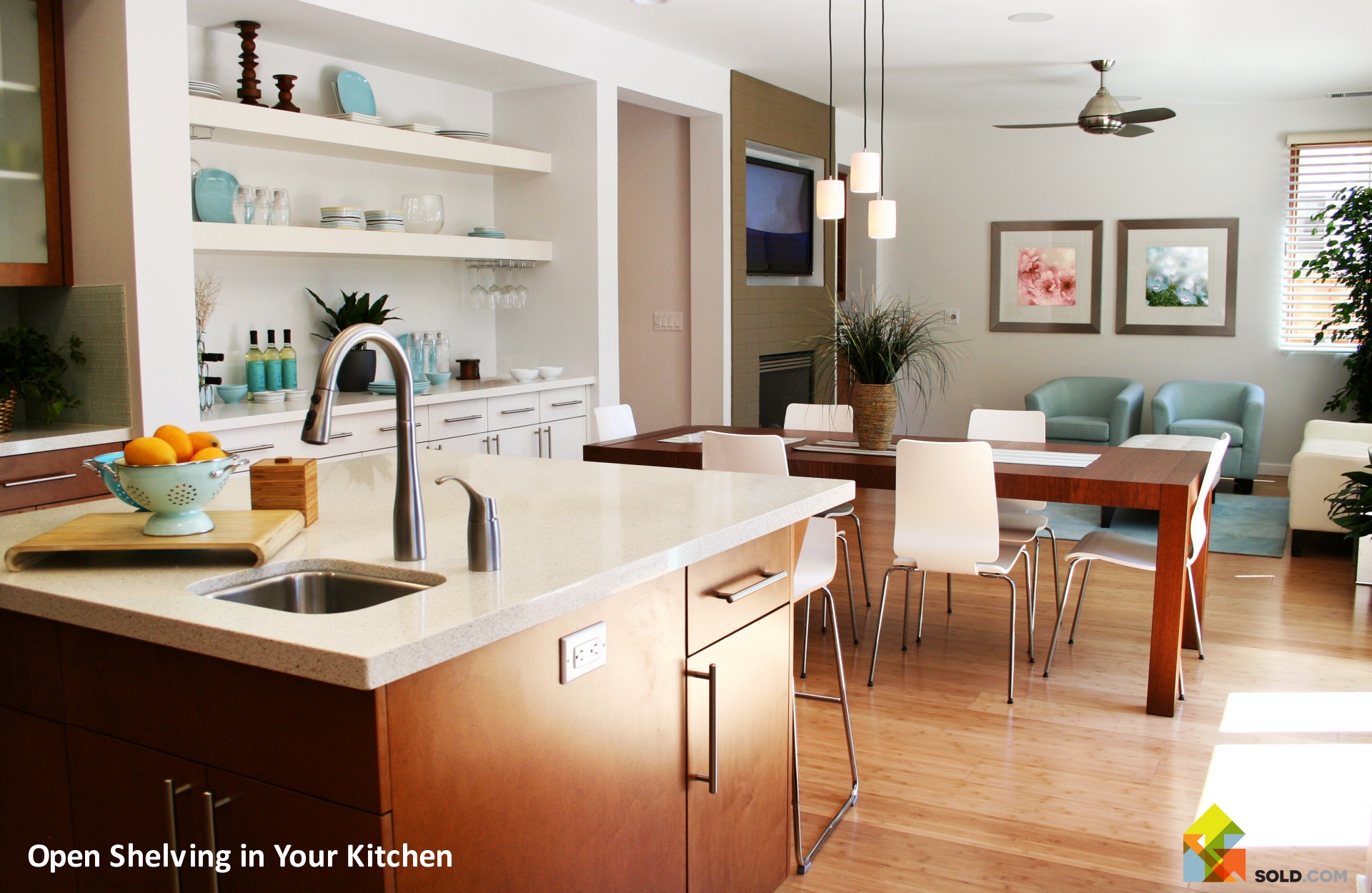
Homebuyers are faced with a staggering number of choices to make. Sometimes, these involve choices about whether or not to buy a house; when should you settle, and when should you compromise? In other instances, they may involve choices about renovations or adjustments you’d like to make after you close on the place and get moved in.
The kitchen alone poses one question after another. For instance, what about open shelving? Good idea or bad idea? Something you can live with? Something you should actively seek? Or something you’d rather avoid?
In today’s SOLD.com blog post, we’re going to unpack these questions and more. Let’s get down to it!
All About Open Shelving
For those who aren’t quite sure what we’re talking about, open shelving basically refers to shelves that are mostly or completely cabinet-free. In other words, shelves that are simply attached to the wall, without any structure to enclose them.
Open shelving has long been a popular design choice in all kinds of houses, and it’s only become more popular over the last few years. While it can certainly be a stylish and eye-catching kitchen feature, it also has practical implications. Take a moment to consider both the pros and the cons.
Pros of Open Shelving in Your Kitchen
One reason why people tend to like open shelving is that it makes your kitchen feel more spacious. By removing the bulky structures of upper kitchen cabinets, you can allow the space to feel more expansive, less claustrophobic. In smaller kitchen spaces, this can be a real game changer.
Another reason why many homeowners like open shelving in the kitchen is that it gives them an area to display collectibles, antiques, beautiful plates and bowls, cookbooks, etc. Indeed, open shelving provides an easy way to add some personality and style to your kitchen space.
Still another reason to think about open shelving? Not only is it highly affordable, but it’s incredibly easy to install on a DIY basis. So, if you buy a new home and decide you want to renovate the kitchen, here’s one thing you can do that won’t break the bank. (And compare it to the cost of getting full kitchen cabinets; the difference is vast!)
One more thing worth noting: Some homeowners have found a stylish balance between cabinets and open shelving. You can go halfway and get an end result that looks pretty good. So, if you just want to try some open shelving before fully committing to it, that’s very much an option.
Cons of Open Shelving in Your Kitchen
There are clearly some significant advantages to getting open shelving in your kitchen… but there are also a few potential drawbacks for us to note.
For example, we noted above that open shelving gives you a chance to show off your personal sense of style. That’s true, but it requires a certain level of tidiness. For some homeowners, open shelving is going to attract clutter… and that clutter, in turn, will make your whole kitchen seem messy.
Something else worth noting is that open shelving can’t always protect your glasses and dishware from dust and debris; homeowners with open shelving may find that they have to wash their dishes a little more frequently.
Finally, while it’s true that open shelving can be stylish, affordable, and easy to install, it should also be noted that not all open shelving products are created equal. Some of them end up looking shoddy and cheap, so we would encourage homeowners to do their research and make a judicious decision.
The Bottom Line
The bottom line about open shelving is that it’s a trend unlikely to go anywhere anytime soon. People love open shelving, and for good reason. With that said, there are also valid reasons for skepticism. Take into account all of these pros and cons as you decide whether open shelving is right for you.
Get House Selling Tips Today
One more thing: Are you trying to get your property sold? And would you like some individualized house selling tips? The best way to get them is to sign up for your FREE seller’s report, available right here at SOLD.com. Claim your report and take the first step toward getting your property sold.

